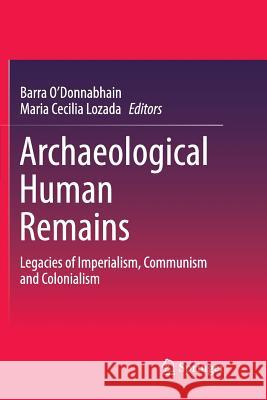Archaeological Human Remains: Legacies of Imperialism, Communism and Colonialism » książka
topmenu
Archaeological Human Remains: Legacies of Imperialism, Communism and Colonialism
ISBN-13: 9783030079093 / Angielski / Miękka / 2018 / 163 str.
Kategorie BISAC:
Wydawca:
Springer
Język:
Angielski
ISBN-13:
9783030079093
Rok wydania:
2018
Dostępne języki:
Ilość stron:
163
Waga:
0.25 kg
Wymiary:
23.39 x 15.6 x 0.97
Oprawa:
Miękka
Dodatkowe informacje:
Wydanie ilustrowane











